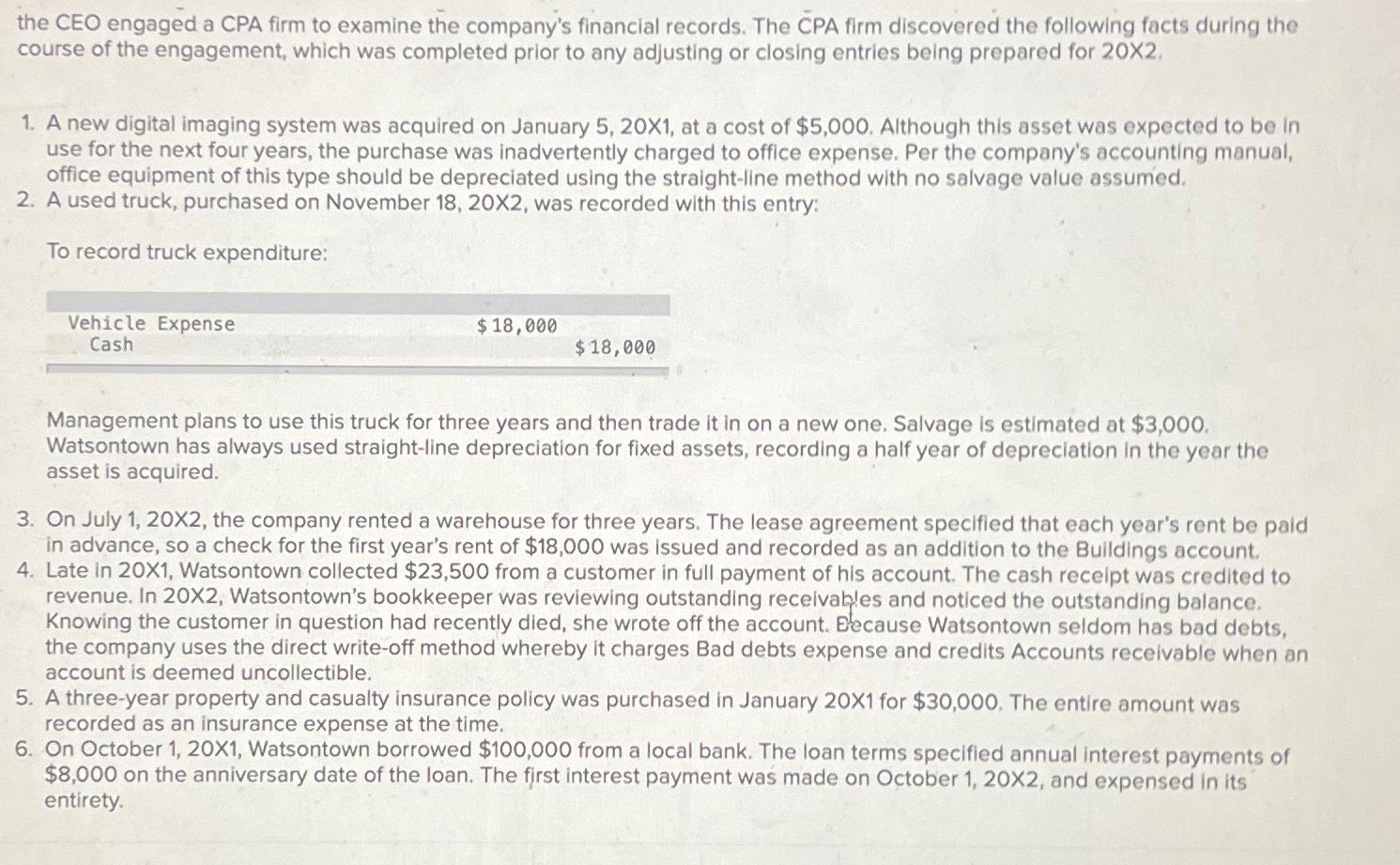Question
the CEO engaged a CPA firm to examine the company's financial records. The CPA firm discovered the following facts during the course of the engagement,
the CEO engaged a CPA firm to examine the company's financial records. The CPA firm discovered the following facts during the course of the engagement, which was completed prior to any adjusting or closing entries beling propared for
20\\\\times 2.\ A new digital imaging system was acquired on January
5,20\\\\times 1, at a cost of
$5,000. Although this asset was expected to be in use for the next four years, the purchase was inadvertently charged to office expense. Per the company's accounting manual, office equipment of this type should be depreclated using the stralght-Ilne method with no salvage value assumed.\ A used truck, purchased on November
18,20\\\\times 2, was recorded with this entry:\ To record truck expenditure:\ Vehicle Expense Cash\
$18,000\
$18,000\ Management plans to use this truck for three years and then trade it in on a new one. Salvage is estimated at
$3,000. Watsontown has always used straight-line depreciation for fixed assets, recording a half year of depreciation in the year the asset is acquired.\ On July
1,20\\\\times 2, the company rented a warehouse for three years. The lease agreement specified that each year's rent be paid in advance, so a check for the first year's rent of
$18,000was issued and recorded as an addition to the Buildings account.\ Late in
20\\\\times 1, Watsontown collected
$23,500from a customer in full payment of his account. The cash receipt was credited to revenue. In 20X2, Watsontown's bookkeeper was reviewing outstanding receivables and noticed the outstanding balance. Knowing the customer in question had recently died, she wrote off the account. Eecause Watsontown seldom has bad debts, the company uses the direct write-off method whereby it charges Bad debts expense and credits Accounts receivable when an account is deemed uncollectible.\ A three-year property and casualty insurance policy was purchased in January
20\\\\times 1for
$30,000. The entire amount was recorded as an insurance expense at the time.\ On October 1,20X1, Watsontown borrowed
$100,000from a local bank. The loan terms specified annual interest payments of
$8,000on the anniversary date of the loan. The first interest payment was made on October
1,20\\\\times 2, and expensed in its entirety.

Step by Step Solution
There are 3 Steps involved in it
Step: 1

Get Instant Access to Expert-Tailored Solutions
See step-by-step solutions with expert insights and AI powered tools for academic success
Step: 2

Step: 3

Ace Your Homework with AI
Get the answers you need in no time with our AI-driven, step-by-step assistance
Get Started


